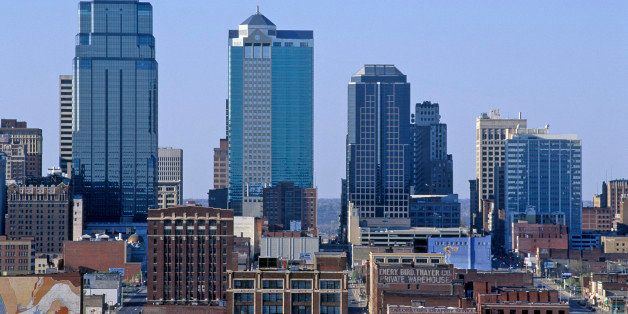
Writing in the New York Times (Sunday November 16, 2014), Kevin Baker accuses the Democratic party of being delusional.
The thrust of this charge is that in the wake of the mid-term disaster, Democratic leaders seem to believe that the party's long-term success is inevitable. All the demographics guarantee it: the nation's population is getting less white, less male, and millennials are coming into their generational own even as boomers age and, despite what many of them seem to believe, die.
There are details to quibble with in Baker's piece -- for example, he discounts the role of civil rights in turning the South from solidly Democratic to solidly Republican by noting that Democrats remained competitive at the state-level in many of those states. I might note that civil rights became the bedrock upon which the "anti-government" politics of the New Right was built. That politics affected the presidential vote first, as Southern revanchists blamed "the government" for desegregation; it played out at the state and local levels later.
Still, Baker's larger point is a good one: demography is not destiny, and if the Democratic Party wants a real future, it needs a real vision. To that end, let me suggest that the Democratic Party may find that vision as much in geography as in demography. In short, if it wants to stage a comeback, the party needs a metropolitan vision.
Forget about the rising percentage of Latinos in this country for a moment and consider this number: somewhere between 65-70 percent of all Americans live in metropolitan regions of 500,000 or more, according to a study by the Brookings Institution a few years ago. That is simply the most recent plateau in a trend of urbanization that has been going on since 1789. Even as Thomas Jefferson envisioned a nation of yeoman farmers, Americans were moving into the cities.
While older industrial cities started to lose population in the mid-20th century, their surrounding regions continued to grow. The growth of post-war suburbia initially created a political polarization pitting liberal, Democratic cities against conservative, Republican suburbs. Mario Cuomo, for example, came from Queens; Alfonse D'Amato came from Long Island.
But that divide has begun to close in a number of areas in the more recent past. As suburban areas around Philadelphia, Chicago, Boston, Denver and elsewhere develop more fully, they have become, well, more urbanized. This means that their populations have grown, they have become more dense, and they have become considerably more diverse. In 1975 George Clinton described the geography of metropolitan America as "chocolate cities and vanilla suburbs," but things have become more complex since then.
And metropolitan Americans have been voting Democratic in growing numbers. A quick look at the map of President Obama's decisive 2012 win is initially startling because it looks so overwhelmingly red. Until you realize that those smaller blue areas around Philadelphia, Washington, DC, Chicago, and Las Vegas are where all the people live.
Not only is metropolitan America trending blue, it has been systematically insulted and ignored by the GOP. President Reagan had no use for America's metro regions, nor did two Bushes. And since 2008 when the GOP has increasingly been run by the bunker-in-the-wilderness survivalist crowd, the party's hostility to all things urban has only gotten more bilious and bizarre. The Republican Party's 2012 platform, for example, denounced "sustainable development" as an attack on "the American way of life of private property ownership, single-family homes, private car ownership and individual travel choices, and privately owned farms." Can a political party really come out against sustainable development and hope to have a politically sustainable future?
So what does a metropolitan vision for the Democratic Party look like? It includes many of the issues and goals currently floating around -- like dealing with immigration, since metropolitan America is still where the majority of immigrants settle, transportation, basic infrastructure. But such a vision might also mean pursuing these issues more aggressively and specifically as metropolitan problems.
It also means pushing the knowledge/education/innovation economy more vigorously too. After all, metropolitan America remains the engine of our intellectual life, and the next developments in high-tech medicine and high-tech manufacturing are going to emerge there, not in the vast red, rural places on the map.
Metropolitan America, however, might prove to be the best place to fight for income equality as well. When urban areas function best, they provide the best ladders for economic opportunity. If, as the president has said, fighting for greater economic equality will be a defining issue for the coming generation, then that fight will be best fought in metropolitan America.
The other defining issue of our time, of course, is climate change, and here the Republican Party was inadvertently right in 2012. Metropolitan America is where the practices of sustainability and of reducing the nation's carbon footprint will be carried out. If New York City were a separate state, it would rank about 10th in population and 51st in per capita energy consumption. Casting climate change as a global crisis makes it hopeless and hopelessly abstract for most people. Re-framing it as a problem that can be addressed in and by metropolitan America could become a movement.
It has been a truism about the Democratic Party for years that it has been merely the sum of its various interest groups: the elderly, African Americans, women, labor, students etc etc. Kevin Baker is right that should not simply rely on that old demographic magic, waiting for new demographic groups to join the crowd, and hoping that this will lead to electoral triumph. But the Democratic Party has an opportunity to seize on geography and become the party of metropolitan America.
Steven Conn teaches history at Ohio State University. He is the author of Americans Against the City: Anti-Urbanism in the 20th Century out this fall with Oxford University Press.